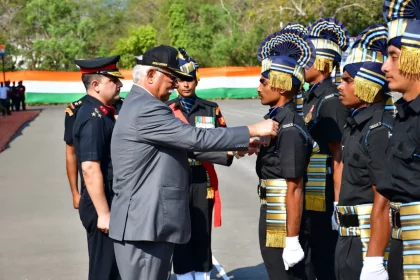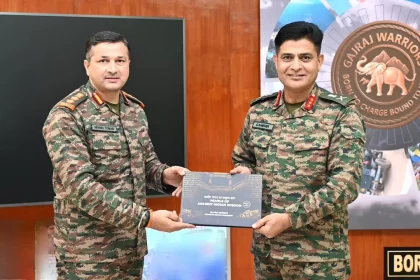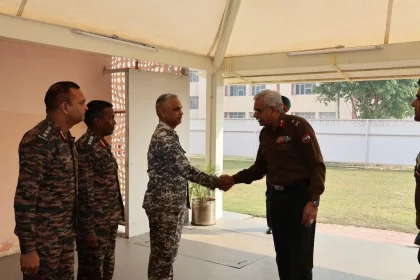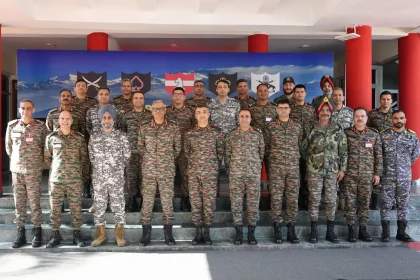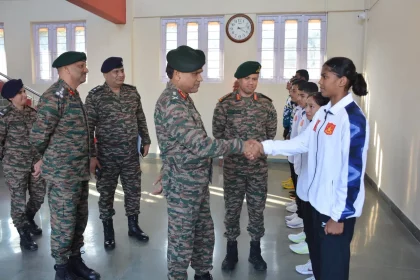Agniveers of Corps of Signals Complete Training at Passing Out Parade in Goa
This successful parade marks another milestone in strengthening the Indian Army's signals and communication capabilities through the integration of young,…
HDMC-21 Officers Visit Gajraj Corps for Operational and Logistics Briefing
Lt Gen Gambhir Singh shares insights on current security landscape and future operational contours.
HDMC Officers Visit Vajra Corps for Insight into Integrated Operations
Maj Gen Atul Bhadauria stresses rapid tech absorption and agility in meeting emerging security challenges.
White Knight Corps Hosts HDMC Delegation for Operational Briefings and Strategic Interaction
Visiting officers gain firsthand insight into LoC dynamics, counter-insurgency framework and Corps-level operational excellence.
GOC MG&G Area Inspires Young Athletes During Visit to Army Sports Institute, Pune
Commander praises grit, discipline and commitment of Army’s emerging sports talent.
Major Somesh M Kaul Wins Dr BK Mathur Gold Medal at GERICON 2025
AFMC Pune officer honoured for outstanding research on digital health literacy among the elderly.

